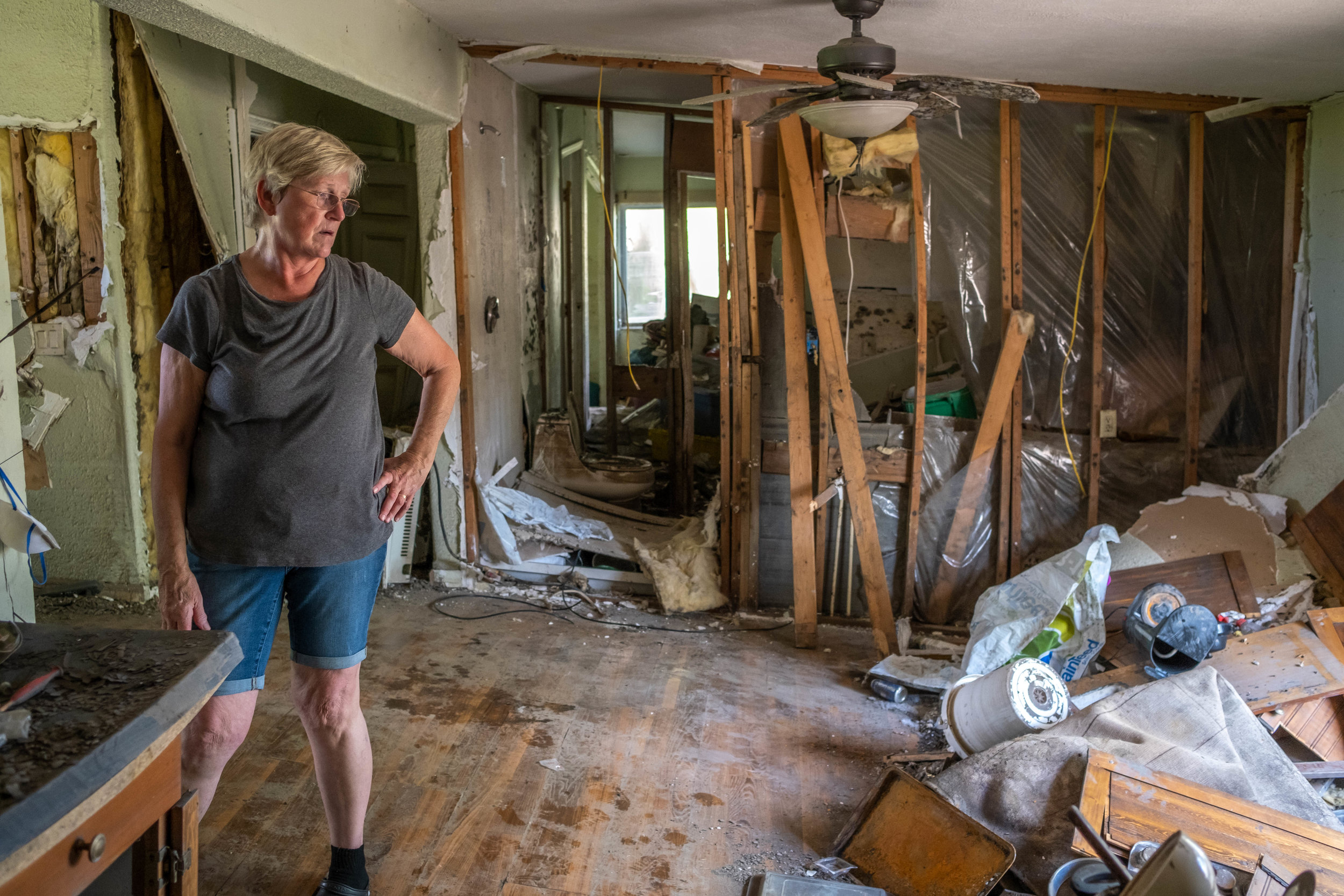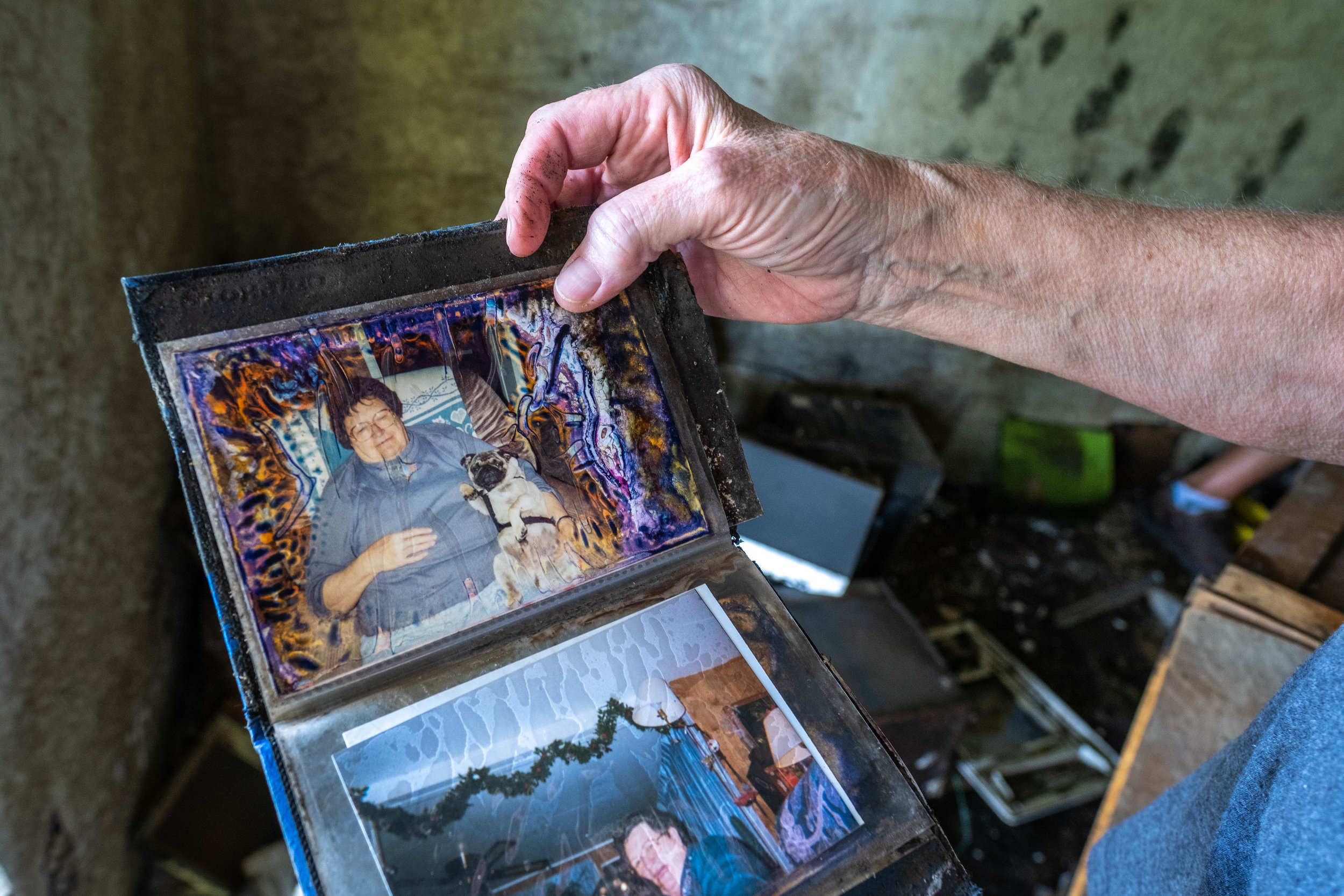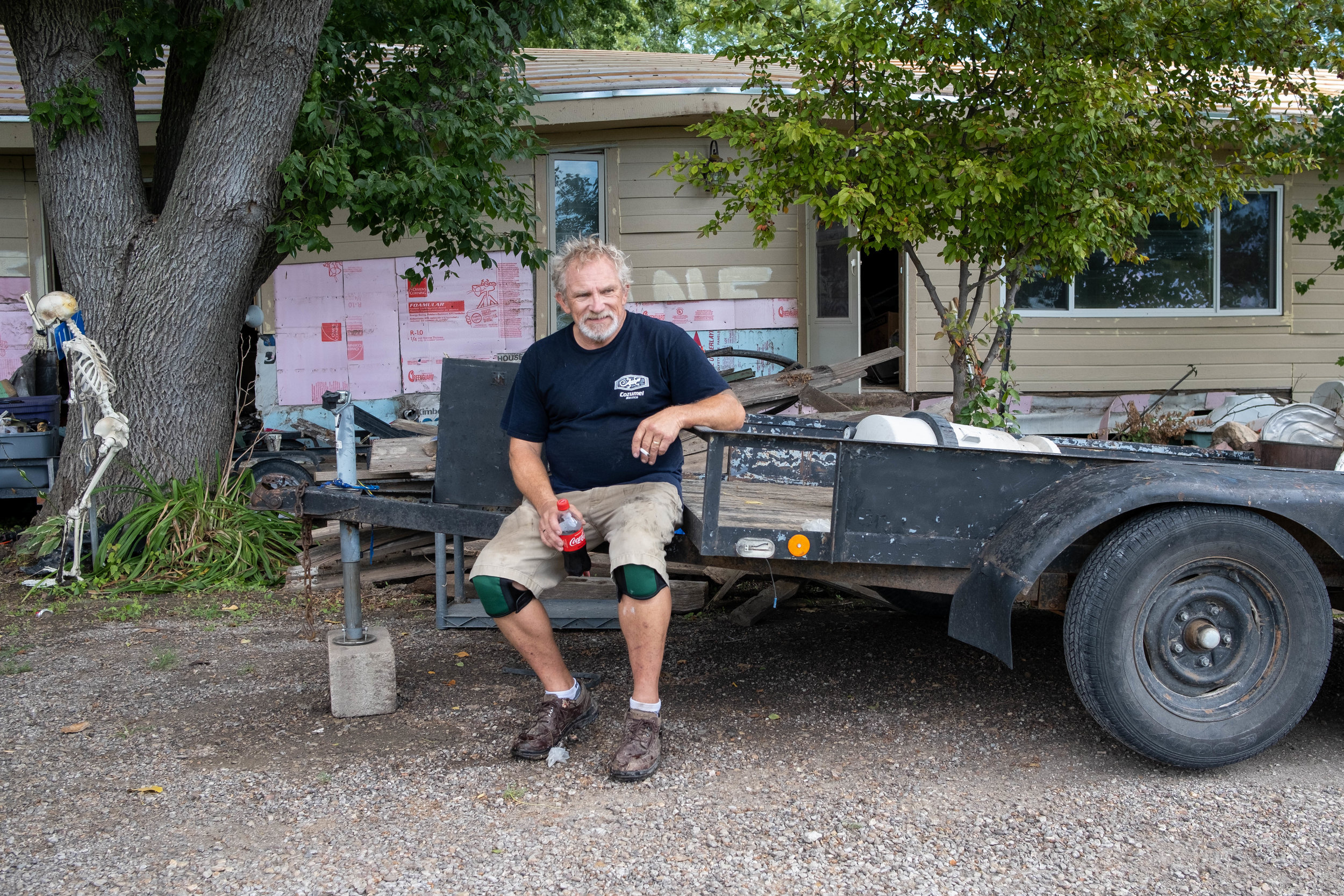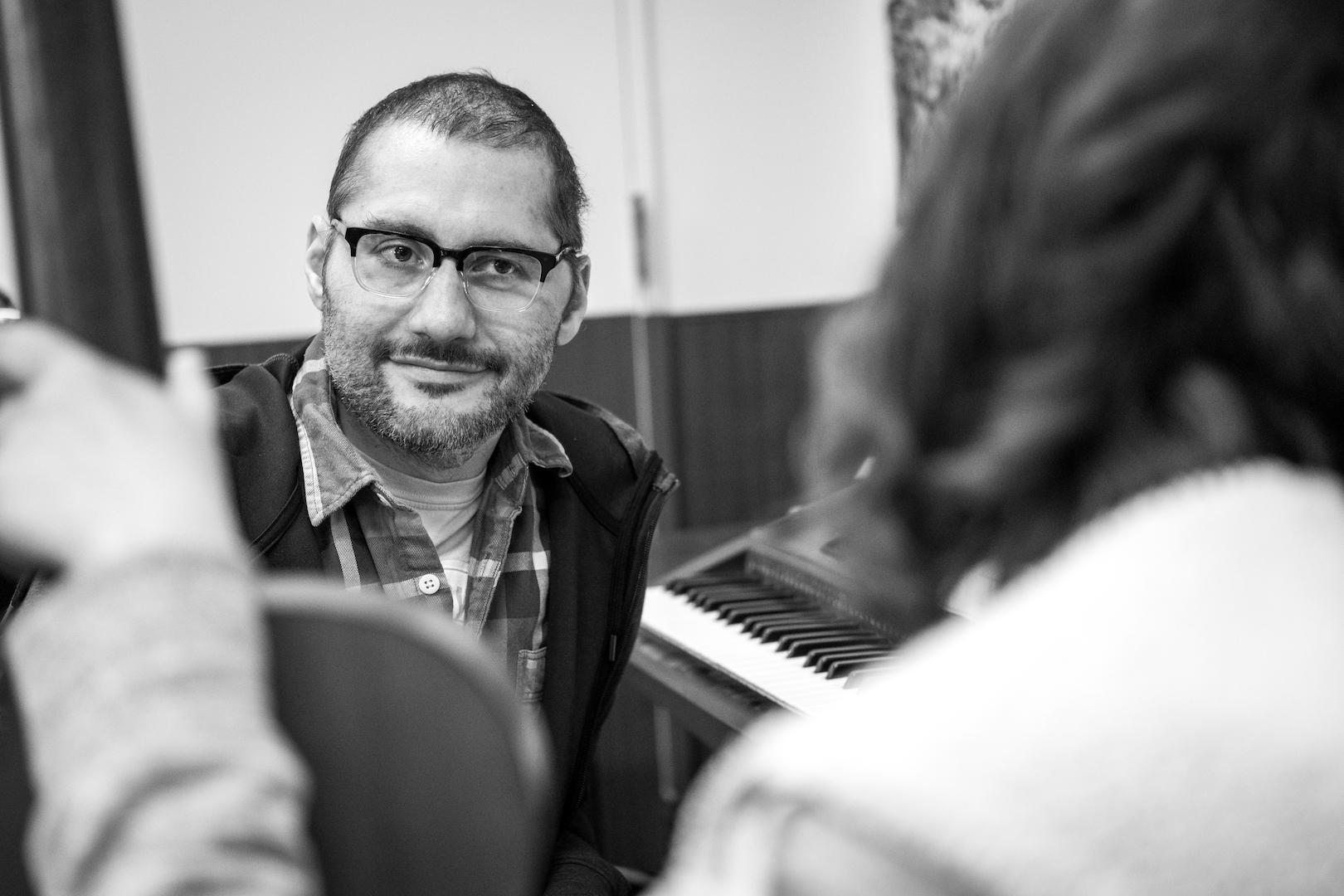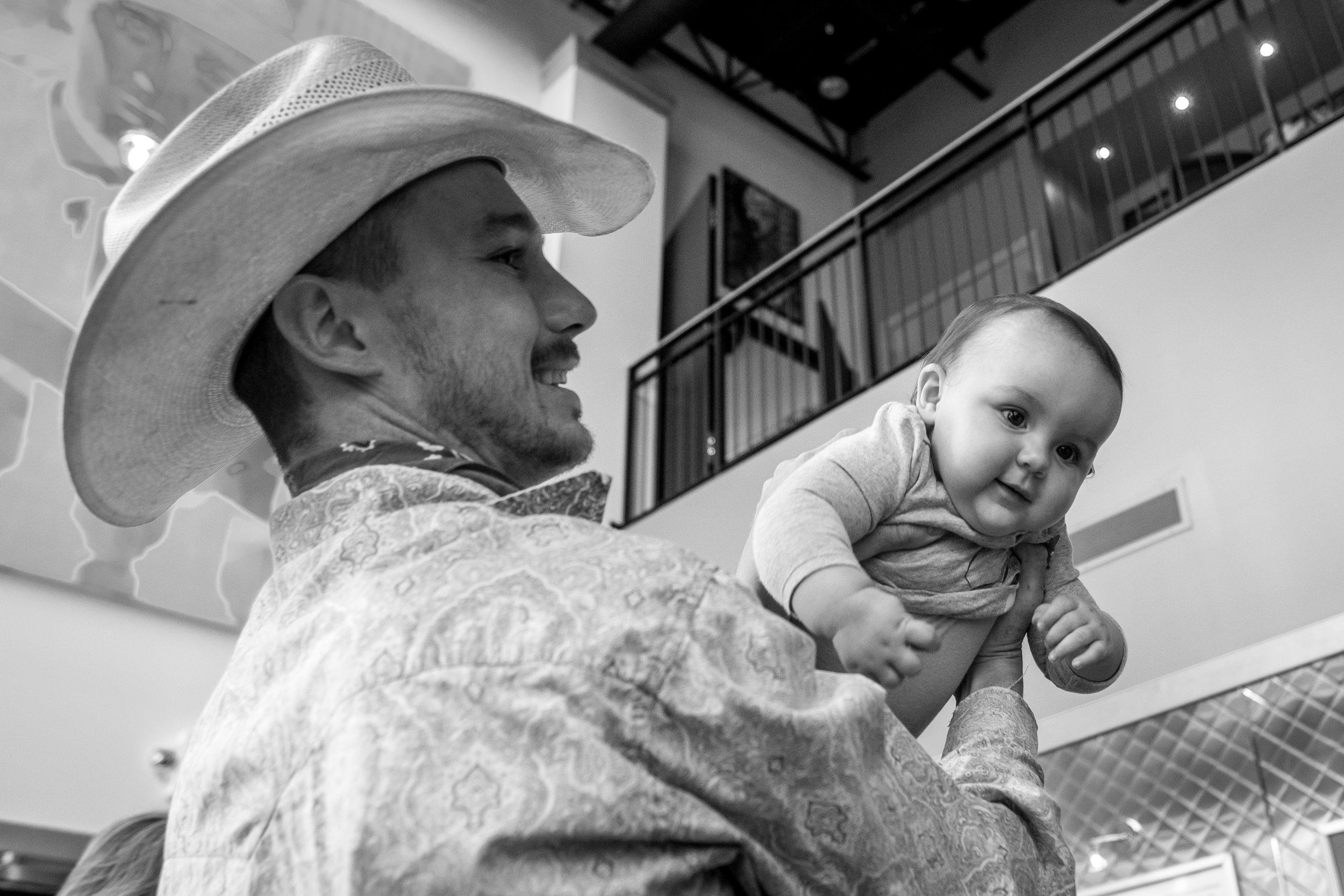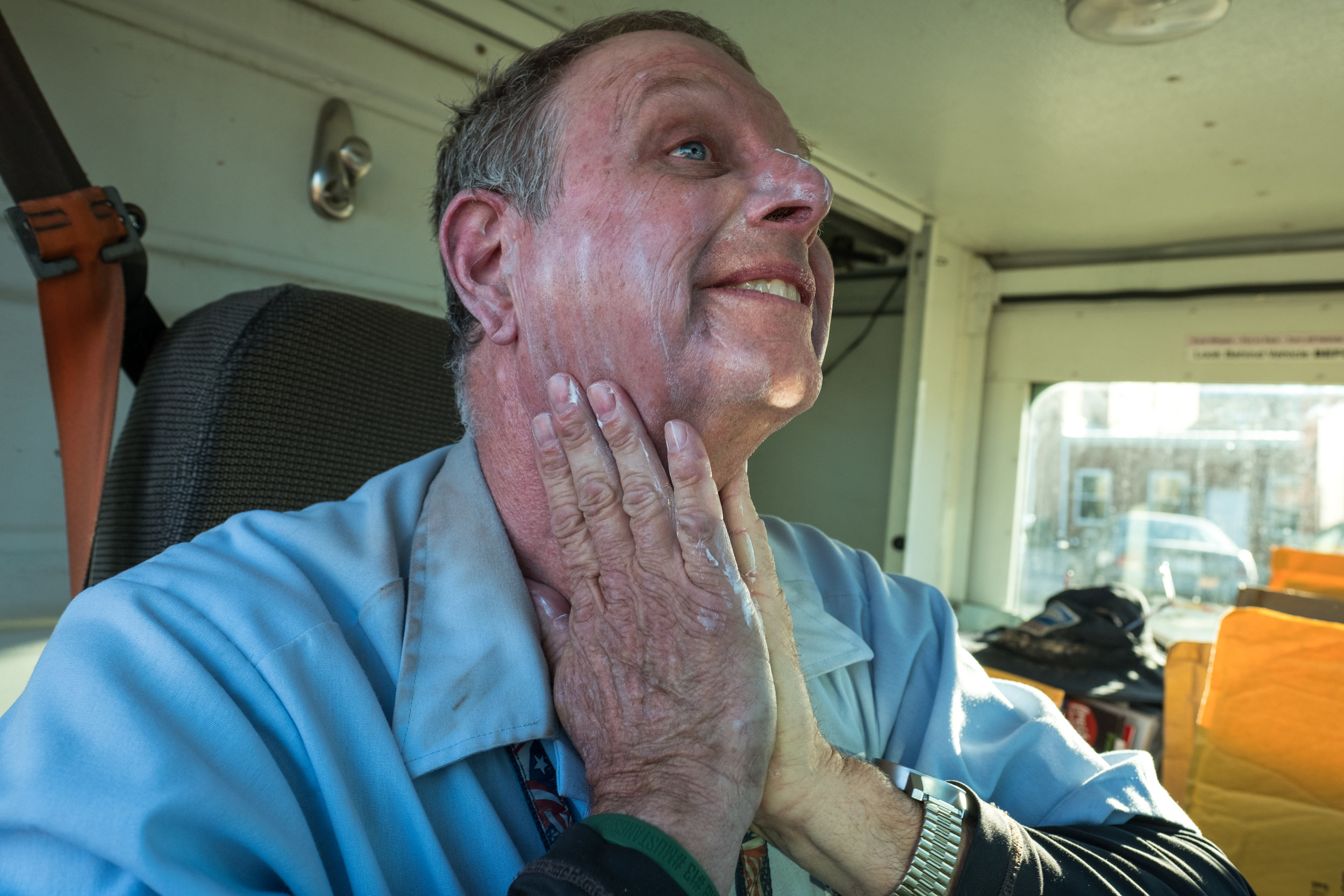In the days of film, we could look at a photographer's contact sheet and see how he or she worked a scene. I've always thought doing a digital version of this would make for a great YouTube idea. Here's my attempt. As I confess in the video, I didn't come away with any award winning photos, but I do believe I came away with a great idea for the future. I'd love to see how more photographers work a scene!
documentaryphotography
The Stillness of Home
All photographs were take in our apartment in Omaha, Nebraska during the first 60 days of the COVID-19 outbreak.
Revisiting Bartlett
I revisited Dean Doty and his wife, Carol, in Bartlett Iowa as they continue the daunting effort of sifting through the rubble left from the monumental flooding this past March.
Jimmy Martin takes a short break from loading wood in the lumberyard. Jimmy is the brother of the Town and Country Minute Mart's owner, Mike Martin. Jimmy told me he's broken every bone in his body except for his neck, saying most resulted from his time as an amateur bull rider and brawling in bar rooms. Jimmy works long days in the yard and maintains a farm during his off hours. His hands are vivid evidence of the relentless work ethic that permeates most of rural Kentucky.
Town and Country Living
A week ago today I returned from Mt. Sterling, Kentucky where I participated in the Mountain Workshops photojournalism session.
The Mountain Workshops follow a similar format to the Missouri Photo Workshop that I attended last year. Both are focused on documenting the lives of people living in small town.
Instead of pounding the pavement to procure a story, as was the case in Missouri, each participant in Kentucky literally drew a story from a hat.
The week consisted of long days shooting my story, meeting with my team and coach and attending nightly presentations. We were also assigned a writing coach to collaborate with in writing stories and captions. My coach was Erika Schultz who is a full time photographer and videographer at the Seattle Times. Erika has a refined and keen eye and gave valuable feedback on my images, as well as suggestions on how to craft the most effective visual story.
Each photographer was given shot limit of 850 frames for the week. I really forced myself to be as economical and selective with my shooting and was pleased when I finished the week having shot just 219 images. I believe this disciplined approach really does hone my eye and helps with seeing then entire scene while anticipating key moments. Out of these 219 photographs, I collaborated with my coach to select 10 that captured the essence of my story. The photos were to submitted in color, but given the timeless feel and look of my story, most of my images seemed to work better in black and white. I’ll post a monochrome edit here this week along with a series of micro stories from the week.
My story was to cover Town and Country Minute Mart in the nearby town of Camargo. I drew my story at 12:30 P.M. on Monday and I was in the mart by 1:30. My initial impression of the mart was met with discouragement. The place looked and felt like an average, run-of-the-mill convenience store. After meeting and getting the green light from Penny, the mart’s office manager, I strolled the aisles and quickly discovered Town and Country Minute Mart is no typical convenience shop.
Here’s what I wrote for my lead in to my story.
Frog legs every Friday, sheets of plywood and 2x4’s, freshly stocked bottles of Ale 8 soda on ice, a tankful of gas, farm implements, green night-crawlers, ball peen hammers, and self serve coffee for 85 cents, you can find it all at the Town and Country Minute Mart LLC in Camargo, Kentucky.
Spend some time in the mart’s deli and you’ll be hard pressed to find a cell phone anywhere. Instead you’ll see people connecting with one another the old fashioned way; face to face.
Click below to see my story posted on the Mountain Workshops site.
Shearer Determination
In November of 2017, Mike Shearer was admitted to the ICU at Methodist Hospital in Omaha with pneumonia and complications from diabetes.
The following evening, Mike suffered a significant stroke and was rushed to Nebraska Medicine where he underwent a risky and life-saving craniectomy.. This procedure involved removing a large section of Mike's skull as well as a significant amount of brain tissue.
In addition to the complications from the stroke, Mike's heart became infected and required damaged heart valves to be removed and replaced with prosthetic ones.
One day after open heart surgery, Mike's body became extremely septic and he nearly lost his life.
Amazingly, Mike weathered all storms.
After receiving acute rehab at Madonna hospital in Lincoln Nebraska, Mike was admitted to QLI for rehabilitation in February of 2018.
QLI capitalized on Mike's passions, values and motivators to create a highly personalized program for Mike and his family.
On May 17th, 2018, Mike finally returned home to be with his wife and three children.
I had the incredible honor of documenting Mike Shearer and his inspirational family for a story for QLI. With Mike's determination combined with the spirit and energy of his wife, Denise, and their children, The Shearers are charting a course for a re-defined life; one with purpose, grace, hope and faith.
I combined my photographs with ambient sound and interviews to create the video imbedded below.
The Rider Premiere in Omaha
Saturday night I had the pleasure of photographing a special screening of the remarkable independent film The Rider.
This event featured QLI rehabilitation program graduate and co-star of the film, Lane Scott alongside his best friend, and leading actor, Brady Jandreau.
The Rider is an achingly genuine and beautiful depiction of life after brain injury. It's truly an inspiring and unforgettable piece of filmmaking.
The Last Letter-My Story at the 69th Missouri Photo Workshop
Last week, I participated in the 69th installment of the stories Missouri Photo Workshop in Eldon, Missouri.
The Missouri Photo Workshop takes place in a different small town in Missouri every year, and is designed to give photojournalists invaluable education and experience with finding, pitching and shooting documentary based stories.
After completing the application process earlier this year, I was thrilled and honored to be selected to join a talented group of 39 photographers hailing from 11 different countries.
The faculty at this year's workshop included a group of renowned and seasoned photojournalists and editors who provided invaluable teaching, mentoring and critiques.
MPW provides many great challenges. Participants are limited to no more than 400 images for the entire week. Deleting, cropping, editing of photos is strictly prohibited. This constraint is designed to simulate the days of film when photographers needed to be extremely contemplative and judicious with their shooting-something that has virtually disappeared and been replaced with the "spray and pray" rapid-fire shooting of the digital age.
I was assigned (along with a group of 7 other fellow photographers) to Team Lee led by Pulitzer Prize winning photojournalist and journalism professor, Kim Komenich, and long time Detroit Free Press photographer and videographer, Eric Seals.
Kim and Eric were fantastic to work with and provided invaluable insight, advice and criticism. Both are videographers, and their focus on the arc of a story was instrumental to crafting my final edit-which included just 10 out of the 394 images I shot during the week.
The first evening opened with a moving photo essay by National Geographic photographer Jim Richardson. His images and memories of his time in Cuba, Kansas deeply resounded with me. I swear Richardson has a mystical ability to predict human emotion before it occurs in order to capture it for eternity with his camera a millisecond later.
Richardson's account of the retirement of Cuba's town doctor was especially inspiring, and I believe it was a harbinger to the discovery of my own story in Eldon.
We were told the most daunting aspect of the workshop is discovering, pitching and getting approval of a compelling story. The town's population of 4,653 made the prospect difficult, but I was astounded by the number of deep and powerful stories the citizens of Eldon provided.
70 percent of participants do not get approval on the first day. Many do not have a story until mid week.
I was one of the fortunate few.
As I was driving into Eldon for the first day of searching and pitching stories, I spotted a postman hustling on the sides streets delivering mail. I briefly thought that might be interesting, but a story featuring a guy delivering mail wouldn't be compelling enough to pursue, and I quickly forgot about it.
I began my story search at the city hall to pursue leads on the town's animal control officer and the local humane society. After chatting with two helpful ladies in the office, I started to leave and remembered the postman.
Tell me about the mail carrier I saw on the way in today
Oh, I'll bet you mean Greg. He's a great guy.
You know, I think it's his last week. He's retiring on Friday.
Finding a story is a little like love. It's indescribable and unpredictable, but you know when it happens.
I knew I had my story.
I hurried across the street to the post office (the beauty of being in a small town), chatted with the supervisor, and 20 minutes later I met the postman...Greg Jarrett.
Greg stopped in briefly on his route to chat, and I learned a little about him. Greg was retiring after 32 years of employment at the Eldon post office.
He was born and raised in Eldon and married his high school sweetheart, Juanita. Greg and Juanita have five children, two living at home and have a 16 year old son, Luke, who has Down syndrome.
I quickly understood this story was just as much about family, as it was retirement.
Greg gave consent right away. I informed Greg this story needed to be deeper than delivering mail, or just his impending retirement. It would involve documenting his entire life and everyone connected to him. To my relief, Greg was still game. I told Greg I needed to pitch the story to my faculty and I'd be in touch.
I then drove a block (small town, remember) to the MPW headquarters in the high school gym to pitch my story to Kim and Eric.
I excitedly told them about Greg, his 32 years of service, his family, his son with Down syndrome, and his retirement on Friday, the last day of the workshop.
Thanks to my enthusiasm, conviction (I said, "look I have a couple other ideas to pitch to you, but THIS is my story!") my story was accepted.
Afterward, Kim Komenich said, "look, this doesn't happen. We don't usually accept stories this easily and so soon, but it's a great story."
And, he was right. It was a great story.
What ensued was a weeklong whirlwind of 18 hour long days of shadowing Greg on his eleven mile route and documenting the rhythm of his everyday routine with his family. When I wasn't shooting, I was in sessions with faculty and my team or attending evening lectures.
It was one of the most exhausting weeks of my life, but also one of the most exhilarating.
Greg is an amazing person with an incredible family. I thank the Jarretts for the access they gave me to their lives.
And, thank you to the Missouri Photo Workshop-espeically to Team Lee and my faculty members, Kim Komenich and Eric Seals. I learned so many invaluable facets to documenting life. It was an unforgettable experience.
Below is a detailed story description of my story, The Last Letter, with photos. Note-my 10 image story can be found on the Missouri Photo Workshop website here: http://mophotoworkshop.org/mpw69/jon-pearson/
Please take some time to check out the other stories from MPW69. It features some insanely talented photographers.
The Last Letter
United States Postal Service carrier, Greg Jarrett has delivered mail in Eldon, Missouri for over 31 years. On Friday, September 29th 2017, Greg will delivered his final letter.
As he turns in the keys to the mail truck he’s driven since 1994 and bids farewell to countless customers and co-workers, Greg eagerly anticipates the next chapter of his life-a chapter firmly focused on family.
Greg and his wife, Juanita, have been together since their Eldon high school days. They have five children ranging in ages from 14-31.
When Greg’s oldest son, Seth, was told the family was expecting child number five, he said, “Dad, you need a hobby”. Greg replied, “Obviously, I do have a hobby.”
The two youngest children, Emma, 14, and 16 year old, Luke, both live at home.
Luke was born two months premature with a hole in his heart. He’s had two open heart surgeries and is facing an impending third operation to repair his heart again and have a pacemaker implanted. The day after his birth, Greg and Juanita were also given the news that Luke had Down syndrome.
While Greg and Juanita know Luke will require consistent supervision for the rest of his life, they also know that Luke also deserves to have a place to call his very own.
“No boy when he’s eighteen should have to wake up every day in a bedroom next to his parent’s room.” said, Juanita.
So, on the property sits a small, 2 bedroom house the couple built themselves simply named “Luke’s Home”.
Change is difficult for most individuals with Down Syndrome, so Greg and Juanita have a two year plan to help Luke gradually become comfortable staying in his house overnight by himself. With his father by his side full time, Luke won't be alone.





